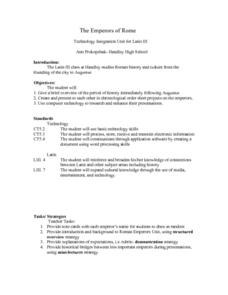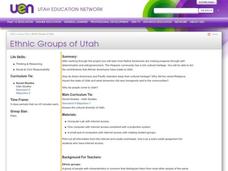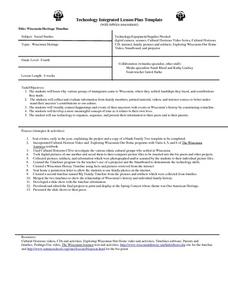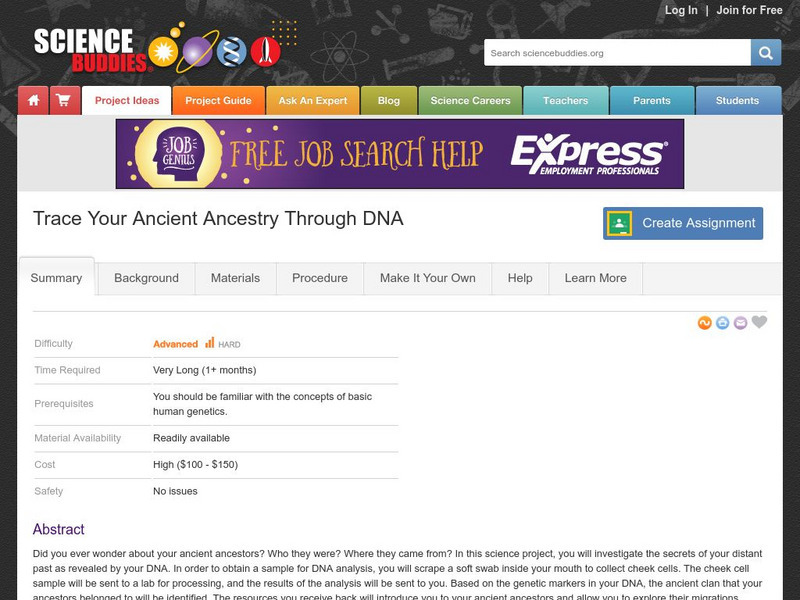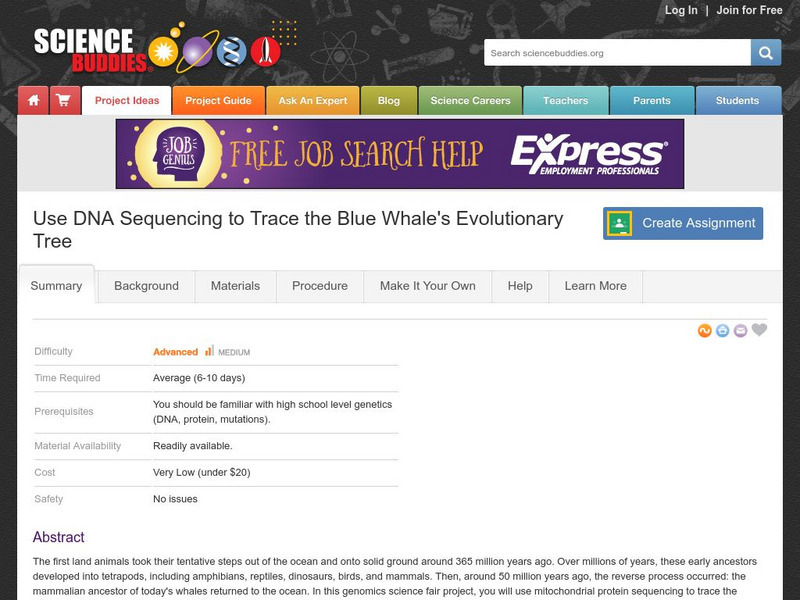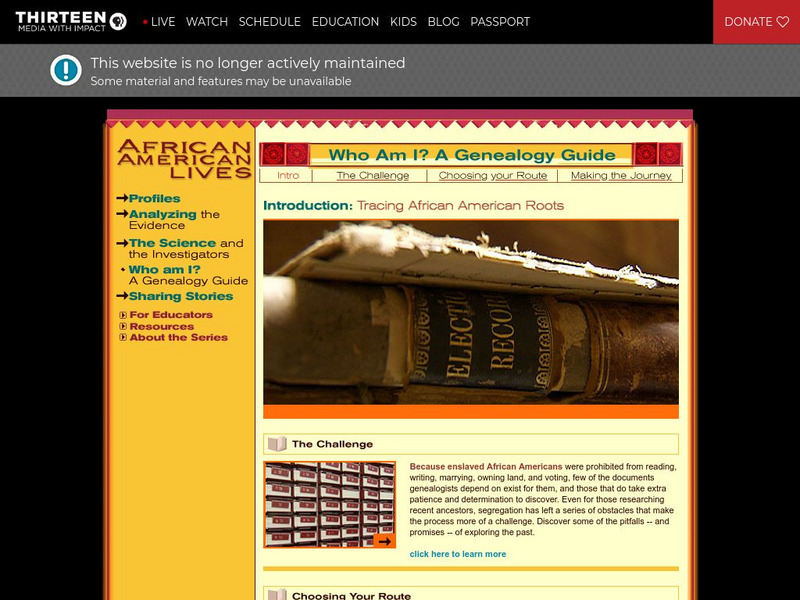Curated OER
The Emperors of Rome
Students research an emperor assigned to them both form on-line sources and paper sources. They locate at least one image of the emperor or a building he authorized to use in their presentation. They create a 5-10 minute presentation to...
Curated OER
Dichotomous Key
Eighth graders use a dichotomous key to identify unknown fictitious organisms. They work individually during this exercise. The task is designed to take students approximately 15-25 minutes to complete.
Curated OER
Paleoecology Using "Fossilized" Owl Pellets
Students study the differences in anatomy to help identify different species and use a dichotomous key to identify what the owls were eating. In this investigative activity students dissect owl pellets to identify the species eaten...
Curated OER
Family History
Eighth graders examine immigration patterns. For this family history lesson, 8th graders investigate their own family histories and then compare and contrast immigration patterns of their class to national immigration patterns between...
Curated OER
Ethnic Groups of Utah
Learners investigate how ethnic minorities have impacted the State of Utah.
Curated OER
Immigration to the United States
Students work together as a class to create a videotape examining their different family histories. They interview their families about their experiences immigrating to America. They draw illustrations of their family to be included on...
Curated OER
Ethnic Groups of Utah
Students examine the many different ethnic groups of Utah and their contribution to society. They research the different ethnic groups using the Internet and answer questions.
Curated OER
Wisconsin Heritage Timeline
Fourth graders explore why groups of immigrants settled in Wisconsin. Through intervies with family members, printed materials, and internet research, 4th graders discover the contributions early residents made to the state. Students...
Curated OER
All Men Are Created Equal
High schoolers discuss the statement "All Men Are Created Equal". Using the internet, they research events in history in which this statement has been ignored and supported by the government. They use this information to write an essay...
Science Buddies
Science Buddies: Trace Your Ancient Ancestry Through Dna
In this science project, you will investigate the secrets of your distant past as revealed by your DNA. In order to obtain a sample for DNA analysis, you will scrape a soft swab inside your mouth to collect cheek cells. Based on the...
Alabama Learning Exchange
Alex: Personal Heritage Project
This research project requires students to connect with the past by researching both primary and secondary sources for family history. Their findings are presented in a keepsake portfolio and in a multimedia presentation comparing the...
Science Buddies
Science Buddies: Use Dna Sequencing to Trace the Blue Whale's Evolutionary Tree
Around 50 million years ago, the mammalian ancestor of today's whales returned to the ocean. In this genomics science fair project, you will use mitochondrial protein sequencing to trace the evolution of whales and identify their closest...
Other
U.s. Genealogy Map Project: u.s. Border/land Claims 1804 1823
A great map and a list of the acquisitions and border changes of the United States from 1804 to 1823. A concise resource showing Western expansion.
PBS
Wnet: Thirteen: African American Lives: Who Am I? A Genealogy Guide
Tracing African American history may be difficult, but the work of historian Henry Louis Gates proves that it isn't impossible. With this resource, learn how to plan a project on your family history.
San Jose State University
San Jose State University: Sacrifices
This virtual exhibition project discusses many aspects of ancient Chinese history, including ancestral worship, weaponry, sacrifice, the Shang Dynasty, gods, the Chou Dynasty, burials, Emperor Shihuangdi, Confucianism, Buddhism, and Taoism.


